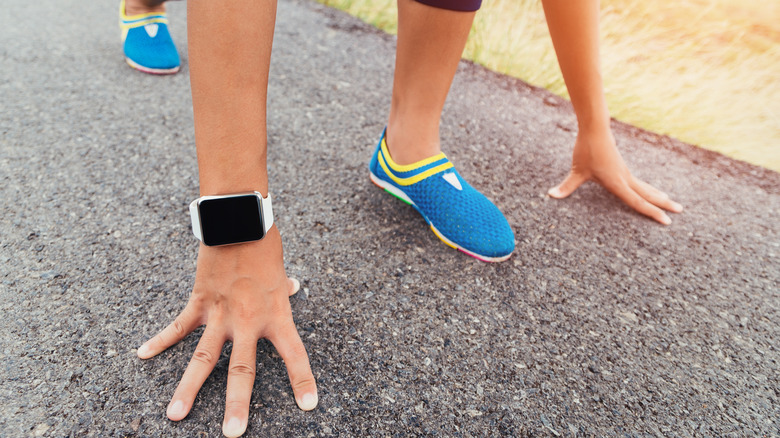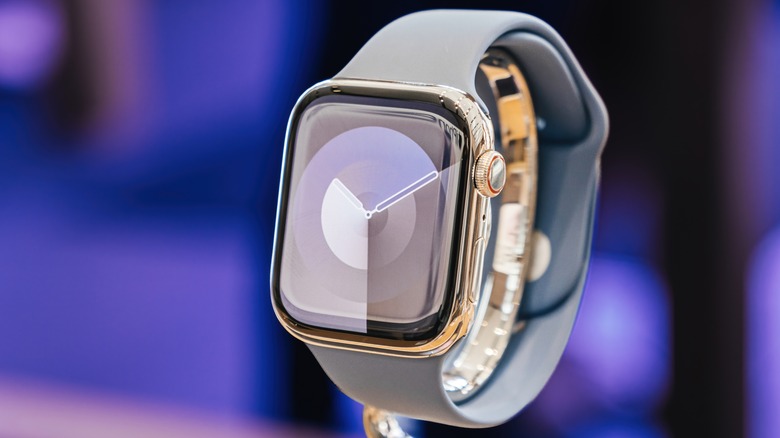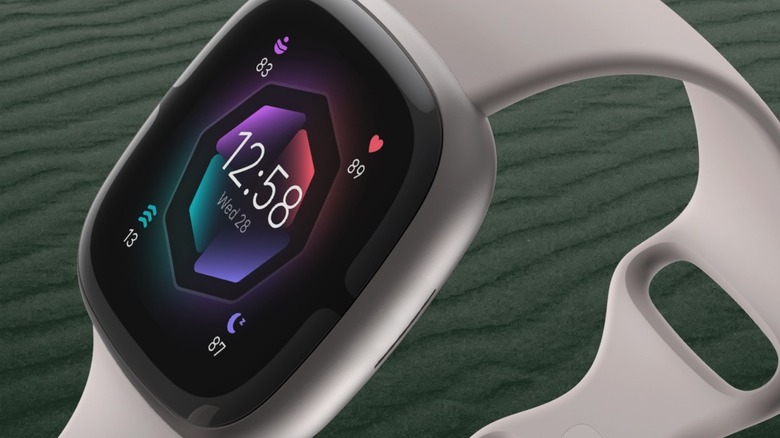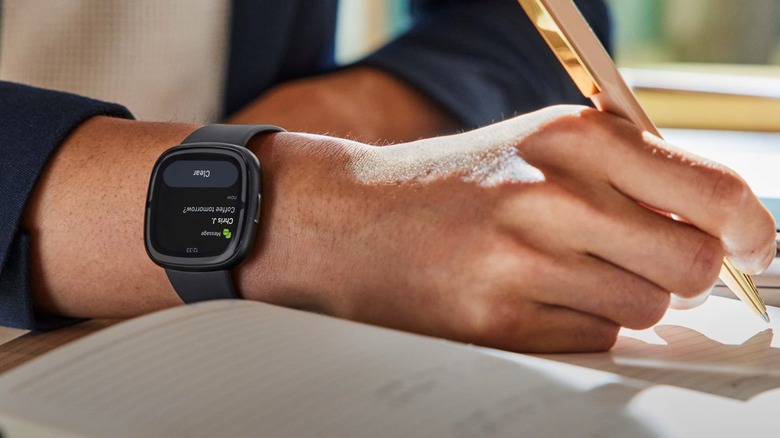Apple Watch Vs Fitbit Sense 2: Which Is Best For You?
The more we learn about health and fitness, the more we want to be able to track our exercise routines, patterns, and evolution through our fitness journey through our devices. Fitness bands that track our steps, heart rates, and many other things have been around for a while now, but these companies are constantly evolving what these bands and smartwatches can do to improve our health.
When it comes to smartwatches that track your fitness, two of the best-known companies making them are Apple and Fitbit, and when selecting which smartwatch you are going to go with, chances are that these two will be producing your candidates. Apple currently has the Apple Watch Series 9, which is the company's standardized smartwatch, and with Fitbit they have the Fitbit Sense 2. The Apple Watch retails at $399, whereas the Fitbit goes for $249.95. That is a rather large cost disparity, but are the two products markedly different for someone, especially if their primary use for the device is health and fitness tracking? Let's break down the two products and see how similar or dissimilar the two smartwatches actually are.
Fitness tracking
When it comes to what the Apple Watch Series 9 and the Fitbit Sense 2 can track in terms of fitness, the two overlap on a great many features. On the most basic level, both smartwatches are able to track your steps and your heart rate, which people like to utilize even if they aren't exercising at a particular time. Beyond that, though, each device allows you to track different results for different types of exercises, whether you're running, lifting weights, or doing yoga. For swimmers, both devices are water resistant up to 50 meters. Both companies also offer a premium membership of $9.99 a month to access guided exercise routines.
Both devices can track your running or walking distances and use GPS to track your routes, like a navigation system. For the Fitbit Sense 2, you can use Google Maps, whereas the Apple Watch can connect to Apple Maps to dictate your route to you. These features keep you focused on your exercise and not worrying about where you are going. Depending on your preferred map service could play a big role in which smartwatch you gravitate towards.
Another difference is brand new. Previously, both devices were able to track your blood oxygen levels, but Apple recently discontinued that feature after a patent dispute. The Sense 2 still tracks this information.
Other health features
For health-related features, both smartwatches do not stop at just tracking workouts and are once again quite similar in what they allow you to do. There are also capabilities to work with other parts of someone's health, both bodily and mentally. Let's first start with mental health. Both the Apple Watch Series 9 and Fitbit Sense 2 offer relaxation, meditation, and breathing exercises as part of their functionality. They also allow you to log your mood at certain points in the day, which can be helpful in wanting to re-center yourself if you are particularly stressed.
A feature that could be enormously beneficial to many that both smartwatches support is the ability to track menstrual cycles, in which you can log your periods and any symptoms that occur on specific days. By tracking these, you can see patterns in your cycle and any abnormalities that might occur during or between periods. They can provide ovulation estimations based on your patterns, though this is obviously not foolproof medical advice.
Both devices also allow you to track your sleep patterns, including measuring how long you are in each different sleep mode, such as REM. Getting a good night's sleep is essential in maintaining a healthy lifestyle, so keeping this information tracked may be very important to some. However, many will find this the best time to charge their watches.
Battery life
One of the biggest advantages of the Fitbit Sense 2 over the Apple Watch Series 9 is battery life. The Apple Watch has a standard battery life of up to 18 hours, which means you will likely be charging the device every day or every other day. This could be a major inconvenience, especially if you want to use your Apple Watch to track your sleep cycles, daily routines, and exercise. Meanwhile, the Sense 2 can last up to six days on one full charge, though this comes with some caveats. Depending on what apps and options you are running on your watch, such as the built-in GPS, this could dramatically reduce your battery life from its maximum capacity.
Although you will have to charge the Apple Watch more often than the Sense 2, the Apple Watch does have a faster charge time. It takes a mere 75 minutes to get to 100% battery after being completely drained, while the Sense 2 could take up to two hours to reach that if dead. If you sometimes forget to plug in your watch at a certain time for charging, you could be left waiting longer than you would want to for a full charge.
Non-health features
A major reason why the Apple Watch Series 9 has such a shorter battery life than the Fitbit Sense 2 is its ability to handle so many more apps than the Fitbit. For the most basic apps, the two share many features. Both watches let you see text messages, answer phone calls, use voice assistance (Siri for the Apple Watch and Alexa for the Fitbit), use a digital wallet (Apple Pay for the Apple Watch and Google Pay for the Fitbit), control music, and have the ability to find your connected smartphone. While the Sense 2 has the added bonus of working with both Apple and Android smartphones, that's where the advantages stop.
The apps available for an Apple Watch are nearly as wide-ranging as the ones available on an iPhone. Not only does it have apps native to iOS products like Photos or Calendar, but you can also download apps ranging from ESPN to check sports scores to Domino's to quickly order a pizza. The Apple Watch can access plane boarding passes in your Apple Wallet, act as a quick calculator to figure out a tip at a restaurant, or let you pull up Shazam to figure out the song playing in the store you're in. These apps also seamlessly integrate with the same apps across all your Apple devices.
Fitbit's primary focus has always been fitness, as the name suggests. The Apple Watch is more of an all-purpose device. Maybe you don't need all the bells and whistles the Apple Watch offers, but perhaps they are incredibly appealing to you. Either way, you are getting a solid smartwatch.




